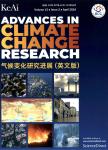Multiscale spatiotemporal meteorological drought prediction:A deep learning approach
作者机构:Department of Earth System ScienceMinistry of Education Key Laboratory for Earth System ModellingInstitute for Global Change StudiesTsinghua UniversityBeijing 100084China
出 版 物:《Advances in Climate Change Research》 (气候变化研究进展(英文版))
年 卷 期:2024年第15卷第2期
页 面:211-221页
核心收录:
学科分类:0830[工学-环境科学与工程(可授工学、理学、农学学位)] 08[工学] 0706[理学-大气科学] 0812[工学-计算机科学与技术(可授工学、理学学位)]
基 金:This work is supported by the National Key Research and Development Program of China(2022YFE0195900,2021YFC3101600,2020YFA0607900,and 2020YFA0608000) the National Natural Science Foundation of China(42125503 and 42075137).
主 题:Meteorological drought Spatiotemporal prediction Multiscale Swim transformer Deep learning
摘 要:Reliable monitoring and thorough spatiotemporal prediction of meteorological drought are crucial for early warning and decision-making regarding drought-related disasters.The utilisation of multiscale methods is effective for a comprehensive evaluation of drought occurrence and progression,given the complex nature of meteorological drought.Nevertheless,the nonlinear spatiotemporal features of meteorological droughts,influenced by various climatological,physical and environmental factors,pose significant challenges to integrated prediction that considers multiple indicators and time scales.To address these constraints,we introduce an innovative deep learning framework based on the shifted window transformer,designed for executing spatiotemporal prediction of meteorological drought across multiple scales.We formulate four prediction indicators using the standardized precipitation index and the standard precipitation evaporation index as core methods for drought definition using the ERA5 reanalysis dataset.These indicators span time scales of approximately 30 d and one season.Short-term indicators capture more anomalous variations,whereas long-term indicators attain comparatively higher accuracy in predicting future trends.We focus on the East Asian region,notable for its diverse climate conditions and intricate terrains,to validate the model s efficacy in addressing the complexities of nonlinear spatiotemporal prediction.The model s performance is evaluated from diverse spatiotemporal viewpoints,and practical application values are analysed by representative drought events.Experimental results substantiate the effectiveness of our proposed model in providing accurate multiscale predictions and capturing the spatiotemporal evolution characteristics of drought.Each of the four drought indicators accurately delineates specific facets of the meteorological drought trend.Moreover,three representative drought events,namely flash drought,sustained drought and severe drought,underscore the significance of selecting appropriate prediction indicators to effectively denote different types of drought events.This study provides methodological and technological support for using a deep learning approach in meteorological drought prediction.Such findings also demonstrate prediction issues related to natural hazards in regions with scarce observational data,complex topography and diverse microclimate systems.



